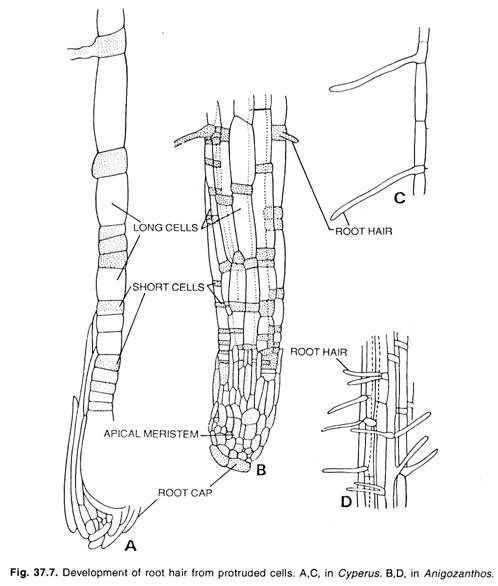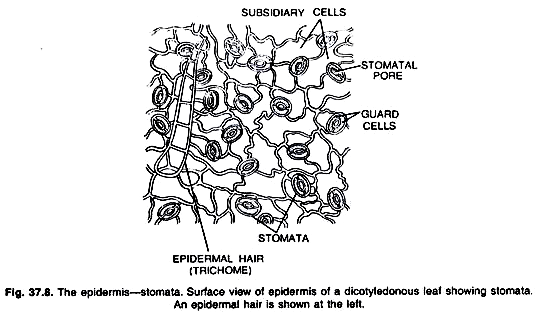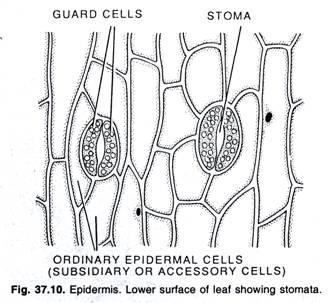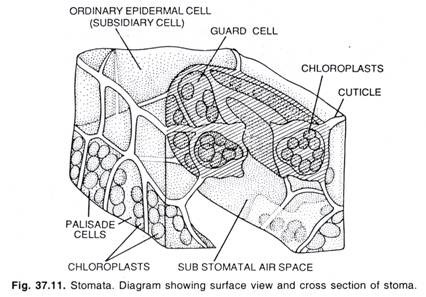Let us learn about Stomata. After reading this article you will learn about: 1. Definition of Stomata 2. Types of Stomata 3. Top function of Stomata.
Definition of Stomata:
The stomata are minute pores which occur in the epidermis of the plants. Each stoma remains surrounded by two kidneys or bean shaped epidermal cells the guard cells. The stomata may occur on any part of a plant except the roots. The epidermal cells bordering the guard cells are called accessory cells or subsidiary cells.
Generally the term stoma is applied to the stomatal opening and the guard cells. The guard cells are living and contain chloroplasts in them. They also contain a larger proportion of protoplasm than other epidermal cells. Usually in the leaves of dicotyledons the stomata remain scattered whereas in the leaves of monocotyldons they are arranged in parallel rows.
The number of stomata may also range on the surface of a single leaf from a few thousand to hundreds of thousands per square centimetre. Stomata occur on both upper and lower surfaces of leaf, but especially they are confined to the lower surface. In floating leaves Stomata are confined only on the upper surface of the leaf.
Under normal conditions the stomata remain closed in the absence of light or in night or remain open in the presence of light or in day time. Structurally the stomata may be of different types.
Types of Stomata:
1. Ranunculaceous or Anomocytic:
Type A — (Anomocytic = irregular celled). In this type the stoma remains surrounded by a limited number of subsidiary cells which are quite alike the remaining epidermal cells. The accessory or subsidiary cells are five in number.
2. Cruciferous or Anisocytic:
Type B – (Anisocytic = unequal celled). In this type stoma remains surrounded by three accessory or subsidiary cells of which one is distinctly smaller than the other two.
3. Rubiaceous or Paracytic:
Type C – (Paracytic = parallel celled). In this type, the stoma remains surrounded by two subsidiary or accessory cells which are parallel to the long axis of the pore and guard cells.
4. Caryophyllaceous or Diacytic:
Type D – (Diacytic = cross celled)-In this type the stoma remains surrounded by a pair of subsidiary or accessory cells and whose common wall is at right angles to the guard cells.
5. Gramineous:
The gramineous stoma possesses guard cells of which the middle portions are much narrower than the ends so that the cells appear in surface view like dump-bells. They are commonly found in Gramineae and Cyperaceae of monocotyledons.
6. Coniferous Stomata:
They are sunken and appear as though suspended from the subsidiary cells arching over them. In their median parts the guard cells are elliptical in section and have narrow lumina. At their ends they have wider lumina and are triangular in section. The characteristic of these guard cells is that their walls and those of the subsidiary cells are partly lignified and partly non-lignified.
Top function of Stomata:
They are used for the exchange of gases in between the plant and atmosphere. To facilitate this function, each stoma opens in a sub-stomatal chamber or respiratory cavity. Evaporation of water also takes place through stomata. 









